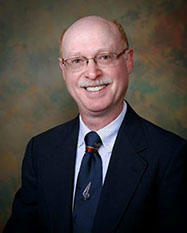In the United States, Medicare pays the salary and fringe benefits of interns and residents in teaching hospitals. This amounts to about $100 thousand per resident every year. Of this amount, the resident is paid about $40-$50 thousand per year in salary.
Some of the dollars from Medicare are paid to physicians in charge of training the residents. In addition, several billion dollars is paid to teaching hospitals every year to offset the added costs of training residents. These costs include malpractice coverage for the residents and the added costs generated by inexperienced physicians who have a tendency, it is believed, to order more tests and consults on their patients than are really necessary. These tests and consults are for “learning purposes.”
In the late 80’s, the Inspector General and the General Accounting Office decided to do an audit as to how this money was spent. This audit found that some of the money was spent on alcoholic beverages, trips to European countries, and fine works of art. Believing that this spending was not related to resident education or training, Congressional hearings were convened.
At the initial hearings, the teaching hospitals argued that Medicare policy on how the money could be spent was unclear. Although Congress agreed that the policies were vague, they also believed that spending on art, alcohol, and trips were clearly not related to the intent of the spending. As a result of these hearings, the initial Physicians at Teaching Hospitals (PATH) audits were done. These audits were intended to “make sure that the Federal Government is getting its money’s worth and that there is honesty in what is being done.”[1]
Historically, the charting on a patient was done by the residents. The attending physician would make rounds where the residents and medical students would present the patient, go over the latest clinical course, including lab values, EKG’s, and radiographs and results of other tests. A discussion would follow and a plan would be made. The history, physical exam, and daily notes were the responsibility of the resident.
For operations and other procedures, the resident who did the procedure or even small parts of a procedure, was expected to do the pre-operative note and the post-operative note and the dictated operative report which was a detailed description of what was done during the procedure including the operation performed, the operative findings, blood loss, specimens obtained, drains placed, and complications.
The documentation done by an attending was variable. Some attendings would do their own notes, some would just cosign the resident notes and some would do nothing. The television show House, starring Hugh Laurie, is a good depiction of attending involvement. House would go over the patient with the residents and he would do procedures on the patients, but he never made a note in the chart.
When I was a Surgical Resident in the late 70’s and early 80’s, night work was in the realm of the residents; including any operations that needed to be done. However, before anything was done to the patient (except for dire emergencies), the attending would be notified. He would then usually give the “go ahead”. At least the attending would be aware of what was going on. Sometimes (rarely) the attending would come in to the hospital but this usually meant that he did not trust the particular resident who had the on-call responsibilities at that time.
The only Medicare requirement for payment was to have some documentation of attending involvement. This documentation was usually met with some co-signatures in various parts of the chart. These co-signatures did not have to be dated and timed although they could be. Often, these co-signatures were placed at the time the patient was being discharged.
The PATH audits turned everything on its head. The Office of the Inspector General found that the University of Pennsylvania had significant errors in their billings. A percentage of billing errors was determined based on a sampling of medical records reviewed. This led to a referral to the Department of Justice (DOJ). The DOJ process used to estimate billing error used the OIG percentage of error results and used that percentage to estimate the potential False Claims for all Medicare part B services for multiple years. By using this methodology, the DOJ was able to claim a fine in the $100’s of millions range. Each violation (false claim) could have led to a fine of over $10 thousand. Since there were thousands of bills and using the percentage of error found in the OIG audit, the DOJ could put the University of Pennsylvania at grave financial risk if the Court were to rule with the government.
Because of the huge financial risk of litigating the claim, the University of Pennsylvania decided to settle with the Department of Justice for $30 million.
A similar audit at the University of Washington resulted in a $35 million settlement. I think the penalty may have been a little higher since one of the neurosurgery attendings tried to suborn perjury by having his residents say he was present in the operating room when he actually was not.
An audit of Dartmouth was initiated even though the OIG had no prior indication that the University was not properly billing. Dartmouth mounted a vigorous defense. The audit lasted for ten months and, according to Dartmouth, cost the institution $1.7 million in direct and indirect costs. When the audit was completed, the identified billing errors totaled $778. Dartmouth was vindicated but it still cost them a significant amount of money in the defense.
The OIG was making a lot of money and every University and Hospital with a training program was on the radar. A lobbying effort led to Congress shutting down the OIG but the chance of the audits starting up again remained.
The Affordable Care Act was passed by Congress and signed by President Obama in 2010. Many parts of the Act have been postponed by a stroke of the President’s pen; other parts have yet to be clarified by the Administrative bodies that have been empowered to enforce various sections of the Act.
One thing is clear. A major focus of the Act is to decrease the cost of Health Care in our country. A major mechanism of decreasing the costs is to eliminate waste, fraud, and abuse. It is likely that physicians will be closely watched to see that they are providing the services that they are billing for. Physicians at Teaching Hospitals will, once again, be scrutinized to be sure that they abide by the supervision requirements laid out by CMS and other third party payers.
At this point in time, the physician educator must document with specificity that he has seen and examined the patient. The documentation must include a pertinent history and physical exam and a plan of action to address the medical problem(s).
For physicians who are billing for a surgical or other type of procedure, there must be documentation that the attending physician was present for the critical portions of the procedure. In the past, a statement verifying that you were there for the critical portions of the procedure would have been sufficient for billing purposes. The physician could use his own judgment as to what a critical portion of the procedure was. I predict that the requirements will be tightened in the future. “Critical portions” are likely to be defined as the beginning of the operation (skin incision) and those other parts necessary to accomplish the operation successfully; this may now even include the closure of the incision.
I do not think that the teaching physicians will be required to do the critical portions of the operation themselves, but they will be required to be present in the room. This can be problematic from a resident training standpoint. If the residents in training are not allowed to do the critical steps of the operation themselves, then how will we know that they can do these steps when they, themselves, become an attending? It is a strong public interest to train physicians for the future. Will there be any wiggle room as to how much “presence” is necessary to allow for billing?
For now, a surgeon needs to be either (1) scrubbed and doing the procedure himself, or (2) scrubbed and first assisting the resident, or (3) not scrubbed, but in the room supervising the resident, or (4) not scrubbed, but available for immediate consultation. This last requirement usually required the attending to be, at least, in the hospital.
The time frame of the presence requirements has never been defined but I would not be surprised if the enforcers try to make it from beginning of the procedure until the end of the procedure. If they do this, it will mean that attending surgeons will need to be spending more time doing procedures and less time in the wards, seeing consults in the clinic, and meeting administrative responsibilities. Of course their research and teaching time will also be affected. This will mean that physicians will need to work more hours per day and/or that more physicians or physician extenders will need to be hired.
A more significant consequence of this more onerous presence requirement will be that future physicians will never have the opportunity to operate independently until they become an attending. Since all of the Surgical boards require a statement from the teachers that a particular resident can function “safely” and “independently,” it is obvious that a conflict is looming as to how best to train future physicians who do procedures, e.g., surgeons. If the law says that attendings must be present from the beginning to the end of a procedure, then there will be no opportunity for the resident to ever work without the attending looking over his shoulder.
While it is true that simulators are being developed to help surgical residents develop the skill sets needed to operate safely, they are not yet to the level of actually operating on a real live human.
It is clear to me that an unforeseen consequence of the Affordable Care Act is the reduction of the skill sets and confidence that the surgeons (and other physicians) in training need in order to operate in a safe and independent fashion. Future generations of patients will suffer as the best training methods in the world are being impaired by regulations mandated by non-clinician beaurocrats. As the older surgeons retire and/or die out, the replacements will just not be as good! What a shame.
Care will be cheaper, but it won’t be as good. I never thought that the American public would put up with this nonsense but I may be wrong.
[1] Senator Arlen Spector, October 21, 1991.

